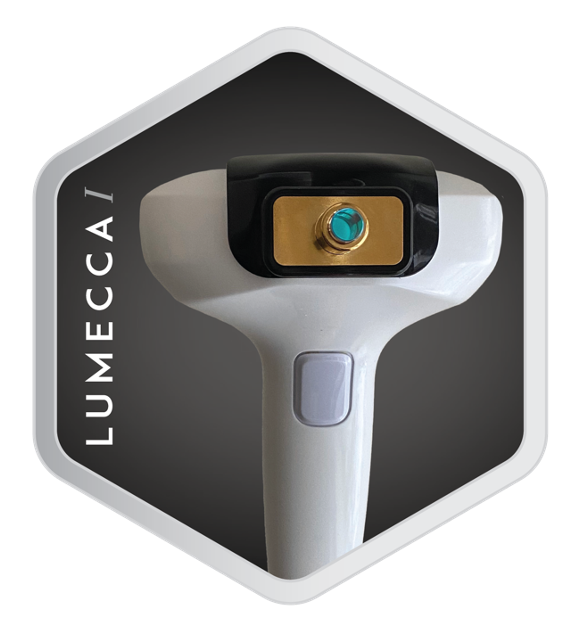Exploring the Efficacy of Forma-I Radiofrequency Treatment for Dry Eye Management
- Irina Daniel
- May 29
- 3 min read
Dry eye syndrome affects millions globally, making simple tasks challenging. Imagine feeling persistent discomfort or experiencing blurred vision while trying to work or engage with loved ones. These symptoms can seriously impact your quality of life. Amid various treatment options, a cutting-edge solution gaining traction is Forma-I radiofrequency treatment. This article will detail the benefits and effectiveness of Forma-I to help individuals determine if it is the right choice for alleviating dry eye symptoms.
Understanding Dry Eye Syndrome
Dry eye syndrome is when the eyes either fail to produce enough tears or when tears evaporate too swiftly. This condition often leads to irritating symptoms like redness, burning sensations, and sometimes blurred vision. Factors contributing to dry eyes include:
Environmental Conditions: Dry, windy, or smoky environments can worsen symptoms.
Prolonged Screen Time: Staring at digital devices for hours can decrease blink rates, leading to dry eyes.
Aging: Tear production often declines as people age.
Medical Conditions and Medications: Some health issues and medications can affect tear production.
For those suffering from dry eye, finding effective treatment is essential. Traditional methods typically include artificial tears and anti-inflammatory medications. However, innovations like Forma-I radiofrequency are expanding treatment options in eye care.
What is Forma-I Radiofrequency Treatment?
Forma-I radiofrequency treatment is a non-invasive procedure that uses radiofrequency energy to stimulate collagen production in the tissues surrounding the eyes. This technology boosts the quantity and quality of tears produced by the lacrimal glands, providing relief from dry eye symptoms.
During a Forma-I session, a specialized
applicator gently touches the skin around the eyes. The radiofrequency energy penetrates the skin, enhancing blood flow and promoting collagen renewal. This results in improved tear secretion. The procedure is usually quick—typically lasting about 30 minutes—and patients often find it comfortable.
Benefits of Forma-I Radiofrequency for Dry Eye Management
1. Non-Invasive and Pain-Free
One of the key advantages of Forma-I treatment is its non-invasive nature. This means patients can undergo the procedure with no incisions and minimal discomfort, providing peace of mind for those uncertain about surgical options.
2. Enhances Natural Tear Production
Unlike artificial tears, which provide only temporary relief, Forma-I treatment rejuvenates the lacrimal glands to boost natural tear production. Studies suggest that up to 75% of patients experience significant improvements in dryness and comfort. This long-lasting relief is especially beneficial for those suffering from moderate to severe dry eye syndrome.
3. Quick Treatment Sessions
Patients appreciate the efficiency of Forma-I radiofrequency treatment. Sessions usually last around 30 minutes, making it easy to fit into busy schedules. This convenience is crucial for those juggling work, family, and daily responsibilities.
4. Minimal Downtime
Another appealing aspect of Forma-I radiofrequency is the minimal downtime. Most patients can resume their daily activities immediately after treatment, making it an ideal option for those with hectic lifestyles. Unlike some treatments that require long recovery periods, Forma-I allows individuals to continue their day without interruption.
Efficacy of Forma-I Radiofrequency: What the Research Shows
Understanding the research behind Forma-I radiofrequency treatment is essential. Clinical trials have reported significant improvements in tear production and alleviation of dry eye symptoms. In one study, 80% of participants noted a remarkable reduction in discomfort, and many expressed higher satisfaction with their overall eye health.
Objective measures, such as tear breakup time and tear film stability, also showed improvements. For instance, average tear breakup time increased from about 7 seconds to over 10 seconds after multiple Forma-I treatment sessions.
Considerations and Limitations
While Forma-I radiofrequency treatment has shown promise, it may not be suitable for everyone. Patients with specific health conditions or those taking certain medications should consult their eye care providers to discuss their options.
Additionally, results may vary. Some individuals might require multiple sessions for optimal outcomes. It's crucial to have realistic expectations about improvement timelines, which can take weeks to manifest.
Preparing for Forma-I Treatment
If you’re considering Forma-I radiofrequency treatment for dry eye, follow these preparation steps:
Consultation: Schedule a detailed eye exam. This will assess if Forma-I treatment is right for your condition.
Discuss Medications: Share a list of medications you're taking with your eye care specialist, as some could affect treatment efficacy.
Set Realistic Expectations: Understand potential outcomes and the importance of follow-up appointments after treatment for monitoring progress.
Understanding Your Options
Forma-I radiofrequency treatment represents a promising advancement in dry eye management. Its non-invasive nature, focus on natural tear production, and quick recovery time make it an attractive option for many facing severe dry eye symptoms.
If you're struggling with dry eyes, consider reaching out to your eye care professional to explore whether Forma-I treatment aligns with your needs. By keeping informed about the latest innovations in eye care, you can make empowered choices that enhance your quality of life.




Comments